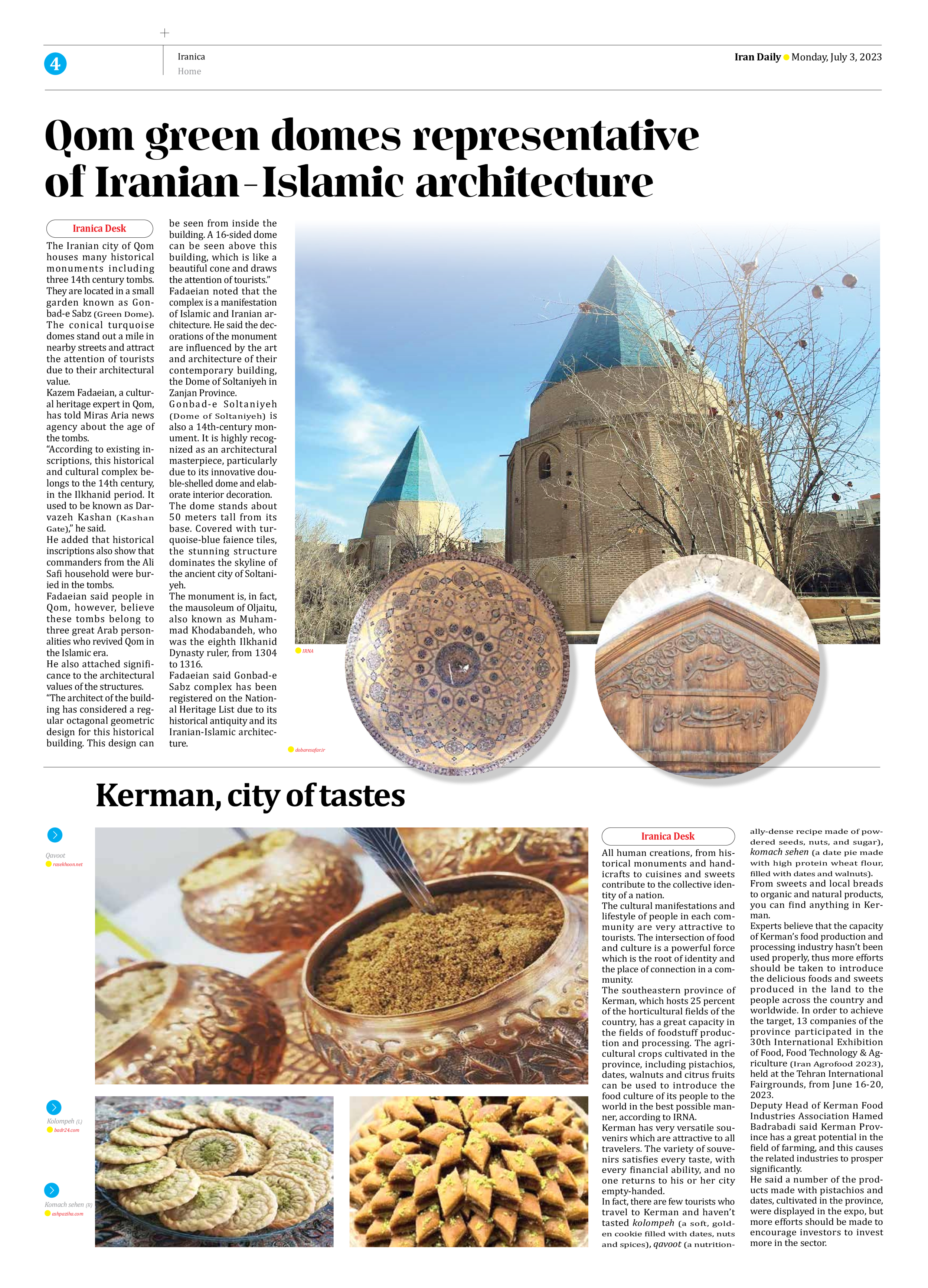
Qom green domes representative of Iranian-Islamic architecture
The Iranian city of Qom houses many historical monuments including three 14th century tombs. They are located in a small garden known as Gonbad-e Sabz (Green Dome). The conical turquoise domes stand out a mile in nearby streets and attract the attention of tourists due to their architectural value.
Kazem Fadaeian, a cultural heritage expert in Qom, has told Miras Aria news agency about the age of the tombs.
“According to existing inscriptions, this historical and cultural complex belongs to the 14th century, in the Ilkhanid period. It used to be known as Darvazeh Kashan (Kashan Gate),” he said.
He added that historical inscriptions also show that commanders from the Ali Safi household were buried in the tombs.
Fadaeian said people in Qom, however, believe these tombs belong to three great Arab personalities who revived Qom in the Islamic era.
He also attached significance to the architectural values of the structures.
“The architect of the building has considered a regular octagonal geometric design for this historical building. This design can be seen from inside the building. A 16-sided dome can be seen above this building, which is like a beautiful cone and draws the attention of tourists.”
Fadaeian noted that the complex is a manifestation of Islamic and Iranian architecture. He said the decorations of the monument are influenced by the art and architecture of their contemporary building, the Dome of Soltaniyeh in Zanjan Province.
Gonbad-e Soltaniyeh (Dome of Soltaniyeh) is also a 14th-century monument. It is highly recognized as an architectural masterpiece, particularly due to its innovative double-shelled dome and elaborate interior decoration.
The dome stands about 50 meters tall from its base. Covered with turquoise-blue faience tiles, the stunning structure dominates the skyline of the ancient city of Soltaniyeh.
The monument is, in fact, the mausoleum of Oljaitu, also known as Muhammad Khodabandeh, who was the eighth Ilkhanid Dynasty ruler, from 1304 to 1316.
Fadaeian said Gonbad-e Sabz complex has been registered on the National Heritage List due to its historical antiquity and its Iranian-Islamic architecture.







